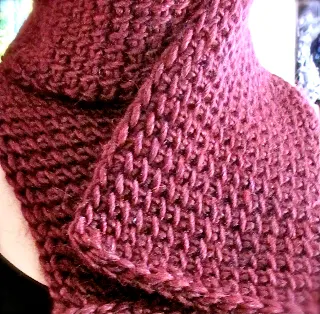 |
| Story of the Aquamarine Réclamé Lariat, blogged. |
Gem chip beads usually have highly irregular bead holes in size and shape. I wanted to string them onto a strong size #20 crochet thread, and none of my needles were fine enough. My best chance was to make a bead-stringing needle out of the thinnest piece of wire I had on hand, which was 30 gauge.
I wish I'd had even finer wire for this, such as 32ga or 34ga! (Notice that as wire gets finer in diameter, the gauge number gets larger.) This wire needle and my thread size were still a bit too thick for a few of my beads. If I tried to force them, they weakened the thread and needle. I decided it's not worth forcing them, and I learned to set aside those beads.
A bead reamer might help make some of these beads more cooperative--if one exists for bead holes this small.
How to Save the Day in Two Seconds with a Bead-Stringing Needle
 |
| From bottom to top: Step 1, Step 2, Step 3. |
1. Cut a piece of the thinnest wire you can find. Cut it any length you like; approximately 3" (8 cm) long is a comfortable length for me. Sometimes I trim the beading end of it later if it gets bent or kinked.
2. Fold the piece in half; the fold becomes the eye of a beading needle. Leave the eye big if you like, as shown. It will collapse down to a tiny needle eye the first time you use it (as shown).
3. Insert the bead thread into the eye, then twist the two wire ends together as lightly as necessary to form a needle point. Add too many unnecessary twists will thicken the needle. That would defeat the purpose of making your own skinny needle!
I have two other common sense suggestions that I learned the hard way LOL.
 |
| Label the Spool. Control the Spool. |
Control how the wire unspools: I simply tie something through the spool center and around it. (Pictured at right is a "twisty-tie".) Then, when I cut off a piece of wire, I hook the new cut end around it. (You can kind of see this in the photo.) This tie controls the unspooling just enough for a manageable speed.
Be kind to yourself and label the spool with permanent ink, if it isn't already labeled! It's almost impossible to remember the gauge of a wire. A surprising number of spools are labeled only on discardable packaging, not the spool itself.















